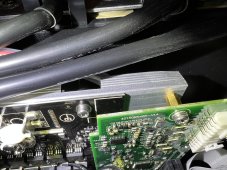Agreed. As you and many others have stated, the problem is bms/pre-charge resistor related.
I have a 250a main breaker between the battery and the inverter. I also have breakers on both of my midnite classics on both the input and the output side. I have tried powering up under every scenario possible. Breakers open, breakers closed, battery on first, battery on last, one battery, two batteries, all four batteries, etc.. Literally, every scenario possible yields the same result with the lifepower batteries. All other batteries work perfectly under any of the above scenarios.
Possibly. I agree that it's unreasonable for SS to test every inverter with every possible scc or other accessory hooked up but a different testing method may have yielded better results.
Another reason i was pissed when they tried to give me "open box" batteries or whatever they want to call them. I'm sure they would have all been at a different soc and voltage which would have caused headaches for me to get them all matched before installation and commissioning. Of course they don't care about details like that so...
Last Wednesday, after spending another two hours on the phone with Richard looking into my bms and hearing that they needed to consult the engineering dept., i came to the conclusion that they have very little idea what's going on. I heard the same thing from Matt over two months ago- we need to talk to engineering to figure this out. The fact that we made zero changes to bms settings or pre-charge timing tells me that Signature solar has no competent Electrical Engineers on staff and they have no idea how to fix this issue.
Potential fixes have been offered on this forum by probably half a dozen competent people-
@Hedges @SpongeboB Sinewave @Quattrohead @Mr-Sandman @robby @Horsefly @MrM1 @RCinFLA and that's just off the top of my head- Sorry if i forgot anyone! But SS refuses to even try any of their suggestions.
In the end, i got batteries that work as promised. That's all i wanted. SS can act like they did something great by giving me "upgraded batteries" but it seems to me they simply finally made good on their promise to deliver batteries that work with my equipment.
I've been hesitant to respond to this thread any longer because honestly, i just want this to go away. It's been a nightmare. I've spent well over 100 hours trying to get my "plug ang play" batteries to work missing multiple days of work in the process. I hope nobody else has to go through anything like this and that's why i chose to respond today.





